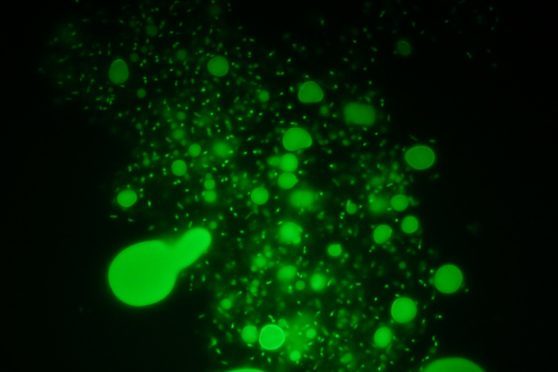Armies of hydrocarbon-eating bacteria could form a key plank of oil-spill clean-up strategies within five years if industry quickly “latches onto the idea”, a microbiologist said yesterday.
Tony Gutierrez, an associate professor of microbiology at Heriot-Watt University in Edinburgh, said oceans contain bacteria which are “standing at the ready like soldiers” to help break down oil in the event of a spill.
But he also said testing treatment strategies for use in UK waters would cost about £1million and called for oil and gas companies to provide financial support before the next disaster occurs.
Mr Gutierrez said it was already known that bacteria could digest hydrocarbons before he started analysing oil-contaminated water samples from the Gulf of Mexico in the wake of the Deepwater Horizon disaster in the Gulf of Mexico.
However, experiments he has carried out alongside US scientists since the 2010 blowout have shown how bacteria work together in a slick, and which species are most effective at different depths.
The studies have also proved certain bacteria can degrade chemical dispersants that are commonly used to break up oil into small droplets.
Mr Gutierrez said: “Understanding which bacteria are important to breaking down oil could help lead to the design of emergency response plans that are more effective and environmentally friendly for combating a major spill.
“We knew that certain bacteria will respond to and thrive during an oil spill and helped break down oil, but we didn’t know how this was coordinated.
“By reconstructing the genomes of these bacteria, we’ve discovered the pathways they use to break down the different types of hydrocarbon chemicals in oil, including some of the highly toxic ones, and the way the bacteria work as a community to degrade the oil.”
He added: “Different bacteria have different appetites for different hydrocarbons, but they can work beautifully in concert together to clean up polluted water.”
One way of using bacteria on a large scale against oil spills is to grow them in massive quantities in a laboratory before freezing them ahead of deployment.
But a more effective technique is to feed nutrients like phosphates and nitrogen to bacteria which are already in a spill zone to help them grow in number, Mr Gutierrez said.
At the same time, it is impossible to design a one-size-fits-all response as some types of bacteria will be more effective than others depending on the water conditions, he added.
Since concluding his work in the Gulf of Mexico, Mr Gutierrez has turned his attention to understanding how bacteria would respond to a spill in colder waters between Faroe and Shetland.
Mr Gutierrez believes it is possible to come up with a way of combating spills in UK waters using bacteria within five years, provided that funding is forthcoming.
He said a proper evaluation of treatment methods would involve simulating a spill scenario, which would cost “in the region of £1million”.
Mr Gutierrez added: “Hopefully, the oil and gas industry will latch onto the idea of using biologically friendly strategies.
“Deepwater was a horrible disaster. When those disasters happen it reminds you there’s a lot of work to be done to prepare for future spills.”
